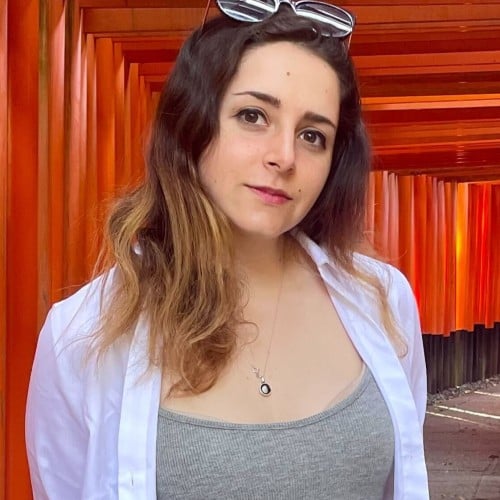
In ‘Exploring Hong Kong’s New Territories’, British author delves into history in hopes of inspiring preservation
- Writer and photographer David Sutton, who has lived in the city for decades, discusses why he wants to shed light on lesser-known aspects of New Territories
- Every week, Talking Points gives you a worksheet to practise your reading comprehension with exercises about the story we’ve written
 David Sutton has been living in Hong Kong for the last four decades. Photo: Handout
David Sutton has been living in Hong Kong for the last four decades. Photo: HandoutWhen visiting Hong Kong, tourists usually picture the vast skyscrapers of Central or Mong Kok’s neon lights and hearty street food.
However, David Sutton – a British photographer and writer who has lived in the city for nearly four decades – wanted to shed light on an often overlooked part of the city: the New Territories.
Last September, Sutton published Exploring Hong Kong’s New Territories, a guide to the largest of the city’s three main regions. Accompanied by stunning photos taken by Sutton, the book details the area’s lesser-known history and destinations.
“Most of what the tourist stuff is, it promotes things like Disneyland and shopping,” the 66-year-old author explained. “They don’t look back into their own history ... The history goes back years. So where is this history? That’s one of the things that I wanted to find out.”
As families leave villages under development plan, their dogs need homes too
Every corner of Hong Kong
After moving to the city to find work in 1986, Sutton has lived in many different areas. He started in Tsim Sha Tsui before relocating to Shek O, then Causeway Bay, Sheung Wan and Kennedy Town. He went to Shui Hau before finally settling in Pui O.
But before moving to the New Territories, Sutton admitted he rarely visited this part of the city. “When you’re working full-time, it’s difficult to get up there,” he said. “I spent most of my time in Hong Kong feeling like that.”
Sutton’s interest in the New Territories and its stories largely began around a decade ago when he was working for Young Post, which had an office in Tai Po at the time.
He learned that Tai Po was where the British raised the Union flag and took possession of the New Territories in 1899. This spurred a six-day war with villagers who were unhappy with the occupation, and about 500 of them were killed.
As Sutton read up on the war, he was inspired to find out more about this part of the city, but he struggled to find English-language books that satisfied his curiosity.
Over the next few years, he started writing about the New Territories’ history, but it wasn’t until the Covid-19 pandemic began in 2020 that he decided to draft a book.
Female crocodile caught in New Territories currently under quarantine in Ocean Park
In his research, Sutton turned to the Antiquities and Monuments Office for basic information. To delve deeper, he found a map online that guided him to historically-significant spots and picturesque locales to visit. From there, he ventured out, often speaking to regional tourist offices to ask more questions.
The author pointed out some of his favourite locations mentioned in the book: “Definitely High Island ... because I like the geological columns; Kam Tin and Ping Sha because of their history; dragon boats in Tai O – it’s a lovely old fishing village. When the dragon boats parade to the village, it’s so spectacular.”
Preservation amid rapid changes
Over the years, Sutton has seen the city change a lot, with new skyscrapers being constructed all the time. Still, he hopes that the New Territories will remain largely untouched.
“At the moment, [it’s] vast, expansive, green,” he noted. “Development has to happen, but I worry whether it happens in the right places.”
The author aims for his book to play a part in documenting Hong Kong’s past, as well as protecting its future. “In terms of readers at Young Post, I hope [it] opens their eyes to the history that is there because it’s their history,” Sutton said.
“Things are going to keep getting demolished unless people show they care about it,” he emphasised. “Some of the temples are hundreds of years old – what records do they have?”
In writing the book, one limitation he faced as someone who does not speak Cantonese was that he could not interview the elderly to collect more information about their neighbourhoods.
“To get good history, you need to talk to the elderly people,” Sutton said, encouraging young Hongkongers to seek out these stories and record them.
“Talk to some of the elderly people in the New Territories before [their knowledge] is lost forever.”
To test your understanding of this story, download our printable worksheet or answer the questions in the quiz below.
